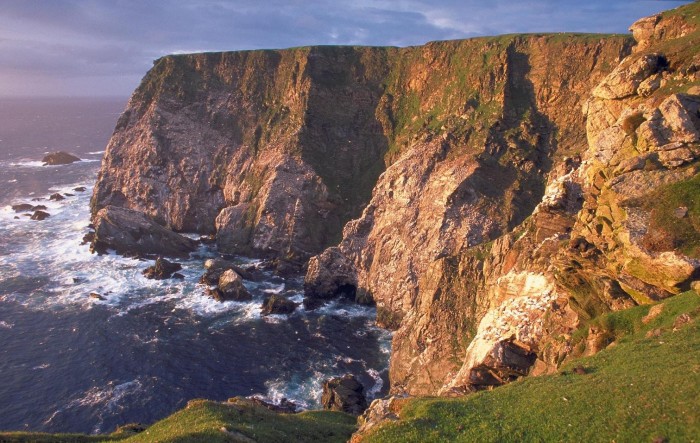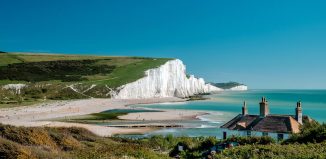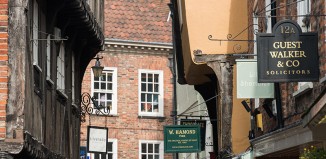Shetland Islands: Viking history

Once a Norse stronghold, the Shetland Islands, in Britain’s extreme north, are littered with relics of their former conquerors and much more besides, writes Paul Kirkwood
The Shetland Islands are marooned over 100 miles off the coast of northern Scotland. They are so far north, in fact, that they’re usually depicted on maps of the British Isles in an inset square and are closer to the Arctic Circle than London.
Shetland wildlife
Once you get to Shetland, though – and it’s only a 90-minute flight from Glasgow or Edinburgh – you don’t have to travel far to experience its wildlife, history and culture. About five minutes by car, in fact. That’s the distance from Sumburgh airport to Shetland’s southernmost point and the logical start to an exploration of the archipelago. It’s crowned by a lighthouse built by Robert Stevenson in 1821, but the main attraction for visitors between May and August are the puffins. Simply walk up a boardwalk beside a dry stone wall next to the lighthouse, look over it and there they all are – so numerous and close you barely need binoculars.
Shetland’s Viking archeology
The first, and most celebrated, archaeological site on Shetland, Jarlshof, is so close to the airport there’s little more than a road and perimeter fence between the two. Named by Sir Walter Scott, the site is a jumble of ruins and archaeological remains dating from the Stone Age to 17th century and including Viking longhouses. Working out which bit belongs to which era is all part of the fun – for archaeologists and visitors alike. There’s access to all areas which means you can descend into the well preserved Pictish wheelhouses, ascend to the first floor of the old laird’s house and wander around all areas in between.
There are more archaeological riddles literally just down the road at Scatness where the remains of an early Iron Age village and broch were discovered and excavated following construction work for the extension of the airport runway. The Vikings literally burnt their boats when they came to Scatness. The rivets that held the distinctive clinker-built boats together were found where they had fallen into the fire as the wood burnt.
Where to see Viking treasures
To put everything in context and set the scene for the rest of your tour you should head next to the excellent Shetland Museum in Lerwick, Shetland’s capital and only town. Exhibits here include a giant hunk of butter that was used by Shetlanders to pay tax to the king of Norway in around AD1000-1500. The butter had been wrapped and buried in a peat bog to keep it cool and damp until it was time to hand it over. The savvy Shetlanders kept the best butter for themselves!
There is also a display about Up Helly Aa, a descendant of the ancient feast of Yule held by Norsemen to celebrate the rebirth of the sun in late January. Dressed as Vikings with winged helmets and shields, men (called guizers) form themselves into squads under the leadership of the guizer jarl (translated as ‘earl’). They march through their town or village bearing giant axes and torches and pulling a boat – a longship in the case of the principal Lerwick festival – into which they cast their torches at the end of the procession to create a bonfire. A long night of merriment follows during which guizers tour halls and other premises performing short shows and dances. You can find out more about Up Helly Aa at an exhibition that runs during the summer in the galley shed in Lerwick and includes the jarl squad suits from the last 10 years.
Lasting Viking influence on Shetland
The Viking influence pervades Shetland. In many respects these islands should be another country and up to 1469 were, indeed, governed from Norway. Many of the place names belong firmly to Norway such as Burra and Voe. My favourite is Muckle Flugga which translates as ‘large, steep-sided island’. Topped by a lighthouse, the islet is the northernmost point of Unst and the entire British Isles. That’s if you exclude the otherwise insignificant and plainly named Out Stack, which hunches a few yards further north still. Continue in the same direction from here and you’ll encounter nothing but sea until you reach the Arctic. The view of the lighthouse is the highlight of a half-day walk from the Burrafirth visitors’ centre across the Hermaness nature reserve to the west coast and back over Hermaness Hill. Beware of great skuas (or ‘bonxies’ as they’re called here) which may try to dive bomb you – and keep an eye open for otters sometimes seen playing in the Loch of Cliff.
A few miles south is a replica of a Viking longboat undergoing reconstruction. Named Skidbladner, the vessel came to Unst in 2000 during a voyage from Sweden. The aim of the sailors had been to recreate a North Atlantic crossing made by Norwegian explorer Leif Ericson in the 9th century. They failed, but couldn’t have chosen a more suitable spot to come ashore. The story of the Skidbladner is told at the Unst Boat Haven in Haroldswick which, among its many vessels, includes herring boats from around a century ago when 600 boats and 50 curers operated out of nearby Baltasound.
The Shetland dialect is another example of the links between the nations and their cultures. Derived from Old Norse, the dialect has an accent that is a weird blend of Scots and Norwegian and also takes sounds from Denmark and Germany, former trading partners. A house down south is a “hoose doon sooth” and B&B landladies don’t make breakfast but “mack brackfast”. The Keep Shetland Tidy slogan is “Dunna Chuck Bruck”. Nothing lost in translation there.
Strong links to Norway
The Shetland-Norway connection was never stronger than during the Second World War – as you can discover on excursions to Lunna and Scalloway. The hamlet of Lunna lies half way up a beautiful, peaceful finger of land extending north-east from Shetland Mainland. The contrast between this place and the much busier main roads and modern settlements more typical of Shetland couldn’t be greater. This is how all of the islands were before the oil money, apparently.
The Shetland Bus
Lunna House is an imposing 17th century laird’s home that today provides accommodation but, during the war, served as the initial headquarters of the Shetland bus. This was the name given to fishing boats which covertly transported men, arms and cargo between Shetland and Nazi-occupied Norway often under the cover of darkness. Compared to the high-tech methods of modern warfare the link seems quaint but, of course, was deadly serious. Lunna was chosen as this most singular bus station because it had a usable pier, sheltered harbour and large house for accommodation.
In the laird’s day the harbour was ideal for landing herring. He built a look-out tower on a hill beside it form which he could spy on his fishermen to ensure they landed their catch at Lunna and not Mossbank across the water. Further adding to Lunna’s charms is its immaculately restored kirk, the oldest in Shetland still in use, built in 1753. Look out for the hole in the wall said to have allowed leprosy victims to hear the service while remaining separated from the congregation inside.
The Shetland bus soon outgrew its early base and switched to Scalloway, the islands’ ancient capital, where there was a better slipway and repair facilities. The bus is commemorated with a plinth at the harbour and its full story is retold in the Scalloway Museum which was opened in May 2012 by Norwegian prime minister Jens Stoltenberg. The principal exhibit is the Heland boat which served in the Shetland bus and also brought over 23 refugees. At the other end of the high street is Norway House where Norwegians stayed in between missions. In common with many other buildings in the village and throughout Shetland it’s made from timber and painted red, Scandinavian-style.
One of the panels at Jarlshof pointed out how, in Viking times and so at one with the sea, men weren’t afraid of rowing for miles over the ocean to trade and therefore that Shetland, being roughly equidistant from the Faroe Islands, Scotland and Norway, was actually a convenient, accessible central hub rather than somewhere out on a limb as it is perceived today. Last June a pair of rowers from Norway completed the same 200-mile crossing in a 17ft open wooden boat in seven days. As wayfarers of all sorts have proved in the past and present and for a variety of reasons, these islands are only as remote as you make them.
More information: Visit.shetland.org is the official tourist website. For an alternative view and lots of images, go to www.undiscoveredscotland.co.uk.







